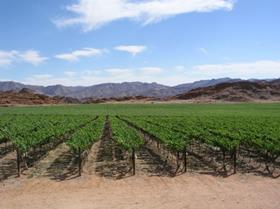
Table grape growers in South Africa’s late region, the Hex River Valley, have ended their harvest and are taking full advantage of the April holiday season in the knowledge that despite some climatic setbacks, they have had another good season.
The Hex region is expected to pack approximately 10 per cent less than the previous season due to the adverse climatic conditions. The shelf life of grapes was affected on some varieties, but in a forgiving market the financial impact was not too severe.
In the end, the country’s total export volume will be about 2.2m cartons short on last year’s crop, reflecting frost damage in some areas and rain at the start of the Hex River season.
At the end of week 16, some 50.2m cartons had been packed compared with last year’s 53.4m cartons. Of this volume the Hex River region contributed some 16.6m cartons and the Orange River 15.1m cartons. The Orange River crop was, in the end, much better than originally expected, when there were fears that it could drop as low as 13.5m cartons.
“The Orange River is really a 19m-20m carton region,” says In2Fruit’s Sarel Joubert, indicating that this season climate played a significant hand in the harvest. “In the end it has been an excellent season with strong markets.”
Joubert notes that over the past ten years, South Africa has substantially changed its variety offer and it is now in a far better position with regards to its global competitors than a decade ago. “
We are now seeing the results of this and as a table grape producing country are well positioned for the future,' he explains.
In terms of actual shipments, the total volume is still just short of 50m cartons, compared with a record export volume of 54m cartons two years ago. Some of the late grapes may well have been kept back in South Africa where growers who can supply the late market are doing extremely well with very high prices.
Northern Europe, with 27.8m cartons, remained the major marketing region for South African grapes. Along with the UK (11.4m cartons) these two regions accounted for 79 per cent of South African table grape exports. Despite a shorter crop, Northern Europe was only slightly down on last year, while the UK actually received more grapes this season compared with last year.
It means that in terms of overall percentage of exports, South Africa’s table grape sales in the other regions of the world have shown little growth despite stated intensions to develop markets – particularly in the East – more quickly than before. South East Asia this year received less grapes than in 2012/13 and so did the Middle East.
“Growers are going where they get the best returns and the British pound and euro this season spoke louder than the dollar markets,” adds Joubert.



